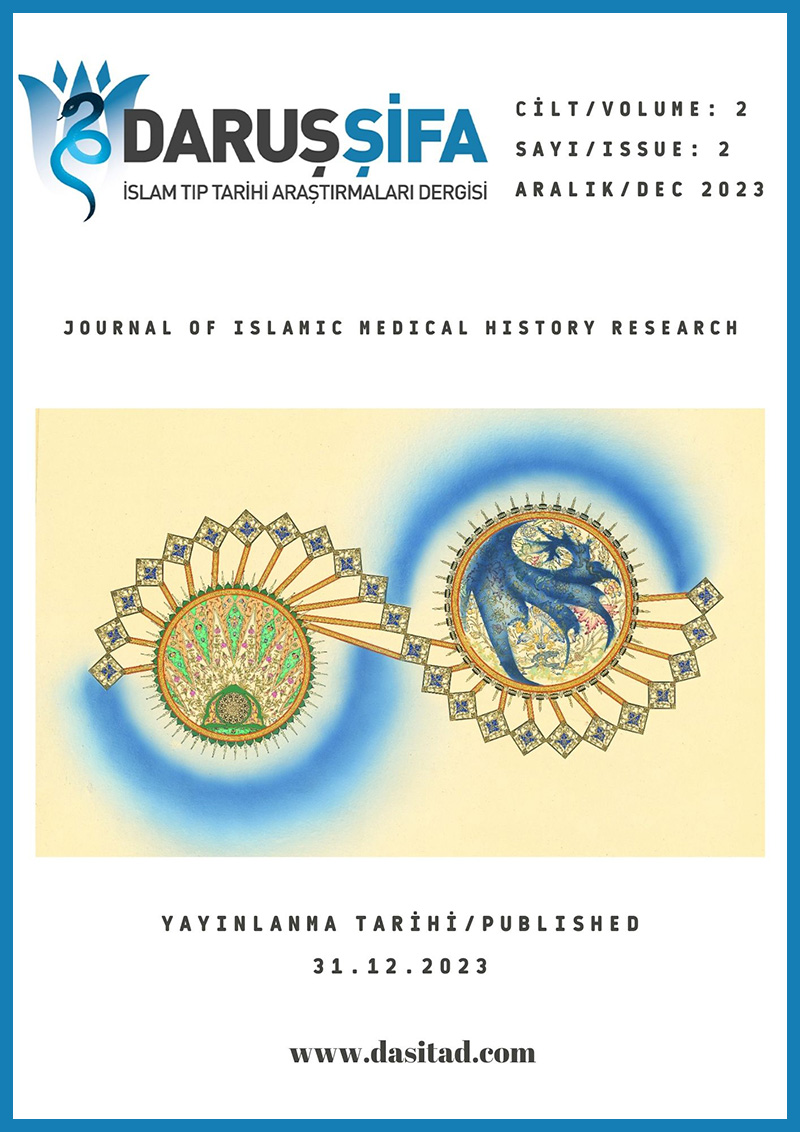Patient Safety in The Era of Hammurabi: A Historical Analysis
Anahtar Kelimeler:
Patient safety, Hammurabi, History, Patient Safety HistoryÖzet
This historical analysis delves into the concept of patient safety during the reign of Hammurabi, the sixth king of Babylon, from approximately 1792 to 1750 BCE, comparing it to various historical periods. Patient safety, a central element of modern healthcare, is explored in the context of Hammurabi's legacy, primarily his Code, one of the earliest known legal codes in human history. The legal provisions addressing medical practices within the Code reveal the paramount importance placed on preserving life and well-being in ancient Babylon, laying the groundwork for contemporary patient safety principles.
The study compares patient safety practices in Hammurabi's time to different historical eras, including Old Egypt, the era of Hippocrates, the Ottoman Empire, 19th-century Europe, and the present day, offering valuable insights into the evolution of medical care and ethical standards. Notably, Hammurabi's era demonstrated a nuanced approach to medical ethics, incorporating principles of proportional punishment for medical malpractice. The comparative analysis highlights the remarkable progress in patient safety and healthcare practices over time, underlining the enduring commitment to safeguarding patient well-being and the establishment of accountability for medical practitioners.
This comprehensive examination of patient safety practices across diverse historical periods underscores the significant advancements made in healthcare and patient care, ultimately reinforcing the importance of preserving and improving the well-being of individuals in need.
Referanslar
"Prologue and Epilogue to the Code of Hammurabi". Open Educational Resource Primary Source Reader for World Civilizations, Minot State University. Available from: https://oer.minotstateu.edu/projects/105SourceReader/prologue-and-epilogue-to-the-code-of-hammurabi.html
Agency for Healthcare Research and Quality (AHRQ). 2021. Medication Safety Program. Available from: https://www.ahrq.gov/health-care-information/topics/topic-med-safety.html]
Aydın, E. 2016. World and Turkish Medical History. Güneş Publishing House.
Barmash, P. 2021. "Scribes and Statutes: The Laws of Hammurabi: At the Confluence of Royal and Scribal Traditions". Oxford Academic.
Bilimoria, KY; Liu, Y; Paruch, JL; Zhou, L; Kmiecik, TE; Ko, CY; Cohen, ME. 2013. "Development and evaluation of the universal ACS NSQIP surgical risk calculator: a decision aid and informed consent tool for patients and surgeons". J Am Coll Surg. 217(5):833-42. p:1-3.
Bulun, M. "Patient safety from Hammurabi to the present and future". Journal of Patient Safety. 2009. 1: p: 6.
Donabedian, A. 1988. "The quality of care. How can it be assessed"? JAMA. 30;260(12):1743-8.
Elgood, C. 1939. "The Papyrus Ebers. by B. Ebbell. The Greatest Egyptian Medical Document. 10½ × 7¼, pp. 135. London: Humphrey Milford". Journal of the Royal Asiatic Society. 71(1). p: 93-94.
Frayne, Douglas R. 2008. Old Babylonian Period (2003-1595 BC). The Royal Inscriptions of Mesopotamia, Old Babylonian Period (RIME 1). University of Toronto Press.
Galen. 2006. Galen: On Diseases and Symptoms. I. Johnston, Ed. Cambridge: Cambridge University Press.
Harunoğulları, M. 2016. "Faith Tourism Potential in Kilis and Sacred Places". International Periodical for the Languages Literature and History of Turkish or Turkic. p:177-210.
HealthIT.gov. 2022. Electronic Health Records. Available from: https://www.healthit.gov/
Institute of Medicine (US) Committee on Quality of Health Care in America. 2000. "To Err is Human: Building a Safer Health System". Kohn LT, Corrigan JM, Donaldson MS, editors. Washington (DC): National Academies Press (US).
Karimi H, Masoudi Alavi N. 2015. "Florence Nightingale: The Mother of Nursing. Nurs Midwifery Stud". 4(2): e29475.
Murphey, R. 1992. Ottoman Medicine And Transculturalism From The Sixteenth Through The Eighteenth Century. Bulletin of the History of Medicin. 66(3). p:376–403.
National Cancer Institute. 2023. Precision Medicine. Available from: https://www.cancer.gov/about-cancer/treatment/types/precision-medicine
Nunn, JF. 1997. "Ancient Egyptian medicine". Trans Med Soc Lond. 113. p:57-68.
Radiological Society of North America (RSNA). 2023. Radiology Information: For Patients. Available from: https://www.radiologyinfo.org/en/
Sakhnini, M. 2021. "Eighteenth-Century European Medical Encounters with The Ottoman Levant". Turkish Journal of History. 73. p:77-101.
Semmelweis, I. 1983. "The cause, concept, and prophylaxis of puerperal fever". English translation by Carter FC. Madison, WI: University of Wisconsin Press. Available from: https://uwpress.wisc.edu/books/1729.htm
The Code of Hammurabi. "The Avalon Project". Yale Law School. Available from: https://avalon.law.yale.edu/ancient/hamframe.asp
Tok, Ö. 2008. Patient- Relatıons Of Patient-Physicion in The Ottoman Physicion in The Ottoman. International Periodical for The Languages, Literature and History of Turkish. 3-4: p.789.
Tulchinsky, TH; Varavikova, EA. 2014. "A History of Public Health". The New Public Health. p:1–42.
U.S. Department of Health & Human Services. 2023. Patient Safety and Quality Improvement. Available from: https://www.hhs.gov/hipaa/for-professionals/special-topics/patient-safety/index.html]
U.S. Food and Drug Administration (FDA). 2023. Regulatory Information. Available from: https://www.fda.gov/regulatory-information
Van de Mieroop, Marc. 2001. "The Eastern Trade of the Babylonian Empire". Journal of the Economic and Social History of the Orient. 44 (2). p:144-171.
Violato, C. 2013. "Doctor-patient relationships, laws, clinical guidelines, best practices, evidence-based medicine, medical errors and patient safety". Can Med Educ J. Mar 31;4(1). p:1-6.
Wagensonner, K. 2022. "The Middle East after the Fall of Ur: Isin and Larsa', in Karen Radner, Nadine Moeller, and D. T. Potts (eds). "The Oxford History of the Ancient Near East. Volume II: From the End of the Third Millennium BC to the Fall of Babylon". Oxford Academic.
World Health Organization (WHO). 2023. Patient Safety: Making Healthcare Safer. Available from: https://www.who.int/campaigns/world-patient-safety-day/2021/patient-safety-report/en/
World Health Organization. 2023. Patient safety. Available from: https://www.who.int/patientsafety/en/
İndir
Yayınlanmış
Nasıl Atıf Yapılır
Sayı
Bölüm
Lisans
Telif Hakkı (c) 2023 Fatma SUSAM

Bu çalışma Creative Commons Attribution-NonCommercial 4.0 International License ile lisanslanmıştır.





